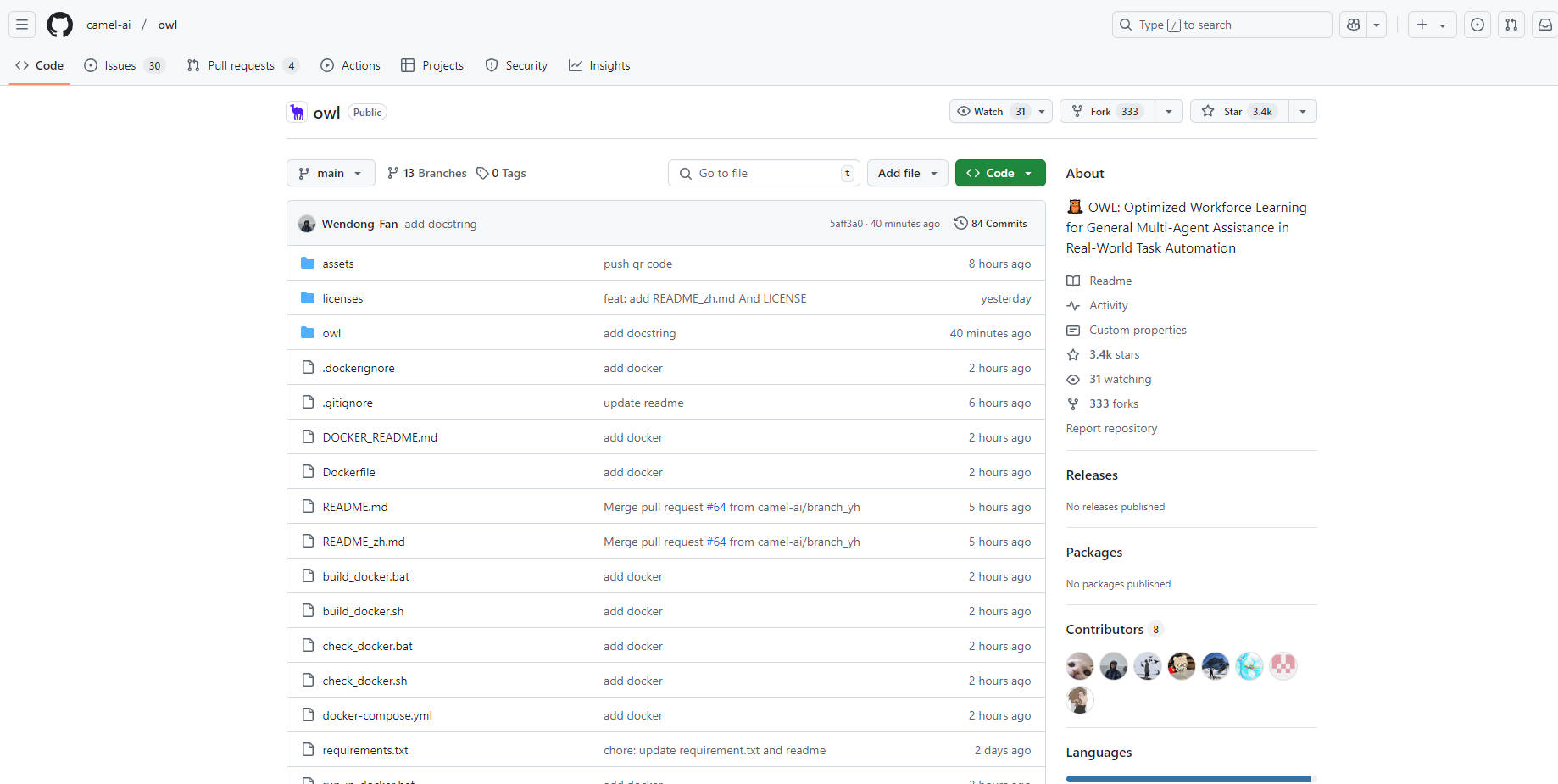
What is OWL?
OWL is an open-source framework built on CAMEL-AI, designed to facilitate advanced multi-agent collaboration for automating complex, real-world tasks. Whether you’re dealing with dynamic information gathering, diverse data processing, or coordinated actions, OWL offers a robust solution. Currently ranked #1 on the GAIA benchmark with an average score of 58.18, OWL demonstrates its effectiveness in addressing real-world challenges.
Key Features:
🌐 Real-time Information Retrieval:
OWL dynamically accesses up-to-date information from various online sources, including Wikipedia and Google Search. This ensures agents are equipped with the latest data, making it ideal for tasks like market analysis or news summarization.🖼️ Multimodal Processing:
The framework seamlessly handles diverse data types, such as videos, images, and audio, whether sourced from the internet or local files. Technical Detail: Inputs are converted into analyzable formats for efficient processing.🤖 Browser Automation:
OWL integrates the Playwright framework to automate complex web interactions, including scrolling, clicking, form filling, and file downloads. Technical Detail: Playwright’s robust API ensures reliable browser control.📄 Document Parsing:
OWL supports extracting data from various document formats, including Word, Excel, PDF, and PowerPoint, converting content into text or Markdown for further analysis. Technical Detail: Efficient parsing libraries handle diverse document structures.💻 Code Execution:
Agents can write and execute Python code directly within OWL, enabling dynamic problem-solving, data manipulation, and custom algorithm implementation. Technical Detail: A secure code interpreter environment ensures safe execution.
Use Cases:
Dynamic Market Research:
A team of agents can analyze the competitive landscape for a new product. One agent gathers competitor pricing and features via browser automation, another parses financial reports using document parsing, and a third tracks news and social media sentiment through real-time information retrieval. Together, they produce a comprehensive market analysis.Automated Software Testing:
OWL orchestrates agents to perform end-to-end software testing. One agent simulates user interactions on a web application, another analyzes log files using document parsing, and a third executes Python scripts to generate test cases and report bugs.Intelligent Data Extraction and Processing:
For extracting specific data points from a large collection of diverse documents (e.g., PDFs, spreadsheets, Word files), OWL deploys agents to parse, extract, and transform the data into a unified format using code execution.
Conclusion:
OWL represents a significant advancement in multi-agent task automation. By combining real-time information retrieval, multimodal data handling, browser interaction, document processing, and code execution, it provides a versatile and powerful tool for developers and researchers. Its top ranking on the GAIA benchmark underscores its capability to tackle real-world challenges effectively.






